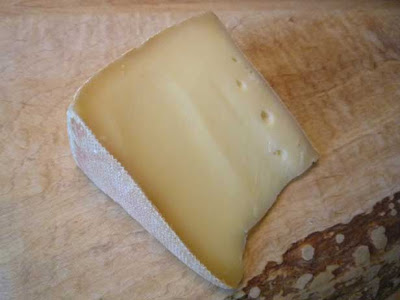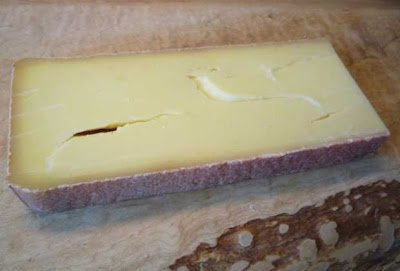Stilton is
without a doubt, one of the best known British cheeses. It is produced in two
varieties: the Blue Stilton, a semi-firm, pressed, blue vein cheese with rich
complex flavours and a piquant finish; and the lesser-known White Stilton
cheese which is a milder, semi-soft cheese.
Blue Stilton has been
granted the status of Protected Designation of Origin (PDO) by the European
Commission. To receive the PDO status, a product must be made traditionally and
entirely manufactured (prepared, processed and produced) within the specific
region and thus acquire unique properties. To be called "Blue
Stilton", it can only be made in the three counties of Derbyshire,
Leicestershire and Nottinghamshire. Milk used in the making must be local cow
milk, which is pasteurised before use. The Blue Stilton must never be pressed
and must be made in the traditional cylindrical shape with its own natural rind
or coat. The delicate blue veins radiating from the centre is Stilton’s typical
characteristic. A true "Blue Stilton" which is aged for a minimum of
9 weeks, must have a "taste profile typical of Stilton" with its
distinct tangy flavour from the use of the fungi Penicillium roqueforti and its creamy crumbly texture.
Thomas Hoe Stevenson Aged Blue
Stilton considered by many as the "Authentic" Stilton, is
produced by Long Clawson Dairy . This Aged Blue Stilton is named after Thomas Hoe Stevenson, who was one of the
original cheesemakers at the dairy. Long Clawson Dairy was founded in 1911 when
12 farmers from the Vale of Belvoir in Leicestershire, formed a co-operative to
produce Stilton Cheese in the village of Long Clawson.
Thomas Hoe Stevenson Aged Blue Stilton is still traditionally
produced, perfectly aged and hand-selected in order to ensure the finest
quality. These wheels are aged for a minimum of 15 weeks. The longer affinage
allows the Stevenson Stilton to develop a more balanced, less aggressive,
mellow flavor with a smooth creamy texture and tastes a lot less salty than other
blue cheeses.
Thomas Hoe Stevenson Aged Blue Stilton is a pasteurised cow-milk,
semi-firm cheese with a natural greyish tan coloured rind and a
creamy-buttery-yellow coloured paste with greenish blue veins radiating from
its centre. It has a smooth creamy buttery texture, with a well-rounded flavour
that is clean and earthy. Stevenson Stilton is a versatile cheese; it is a
perfect addition to any cheese plate, an excellent ingredient in a variety of
dishes (from salads, soups and main courses) or as a dessert served with figs
or dates, walnuts, biscuits and breads. The full flavour of Stevenson Aged Blue
Stilton pairs nicely with more full flavoured wines it is a perfect match for
ports or desert wines or try it with a Shiraz.
Long Clawson Dairy has
progressed in the past 100 years. Today, milk is supplied by 43 local farms,
all from within the Leicestershire, Nottinghamshire and Derbyshire areas. These
farms range in size, producing between 350,000 to over 4 million litres of milk
per year. Long Clawson Dairy is one of the six dairies in England that is
licenced to produce Blue Stilton. Although best known for their Blue Stilton, they
also produce a number of other delicious English cheeses and cheese products,
such as Blue Shropshire, Aged Red Leicestershire and a range of sweet &
savoury cheese blends.








































